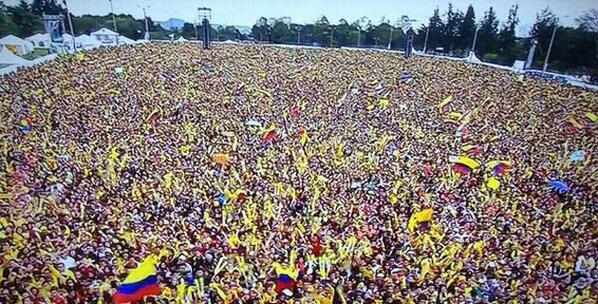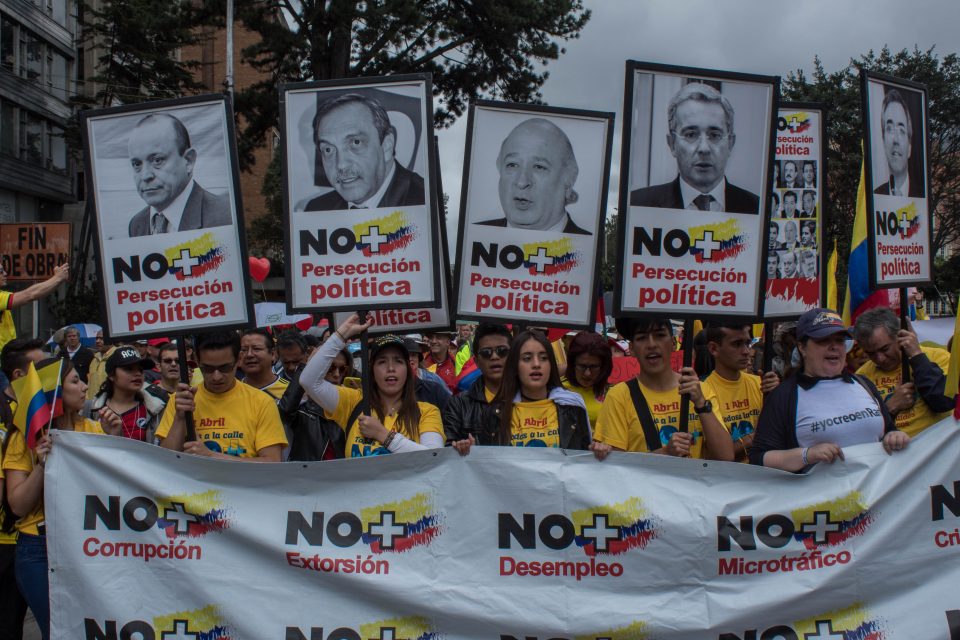Nowhere to go but up
For: Dia Sin Carro has been getting steadily better as the city’s public transit systems expands, says Andrés Felipe Vergara
Dia Sin Carro, or No Car Day, is an educational initiative that seeks to modify people’s transport habits and get them to think about getting around Bogota in a more sustainable way.
The first No Car Day took place 15 years ago after the initiative was ratified in a referendum. Yes, there were loud cries of protest by some sectors of society and some in the business community. But No Car Day exists because the majority of Bogota’s voters wanted it.
No one is saying that the city’s public transit system is perfect, and many of the complaints against it are valid. The first few No Car Days took place when the Transmilenio system was new, and many of the bicycle paths were still under construction. But the city has improved immensely over the years, and access to alternative forms of transport will continue to improve.
The fundamental purpose of No Car Day is to change the mindset of Bogota’s commuters. More than 80 percent of Bogotanos already get around the city every day without a car and for thousands more a bicycle is not just a fun way to exercise but their primary mode of transportation. The more people riding bicycles, the less crowded and better functioning the Transmilenio and SITP systems will be.
It is also important to note that only 15 percent of commuters use a private car, but they occupy 90 percent of the city’s roads.
And more than half of those -as many as 60 percent!- are occupied only by the driver.
But the goal here isn’t to make cars the enemy. The city government has also encouraged people to start car-pooling through a number of education campaigns.
The city should move forward with its infrastructure investments, and continue to make it more attractive for people to take public transport, cycle, or walk – instead of hopping in their cars.
But this will take time, funding to expand and improve the Transmilenio and SITP systems, and of course, the educational component that comes with No Car Day.
Andrés Felipe Vergara is the founder of the Ciclopaseo Wednesdays cycling club, and currently serves on the City Government’s ‘active modes of transportation’ initiative.
Pointless populism
Against: Dia Sin Carro is an insufficient solution to the city’s problems, and makes life harder for Bogota’s working poor, argues Kevin Howlett
I have no problem with encouraging people out of their cars. Nor is there anything wrong with developing mass environmental consciousness.
The problem with No Car Day is that it tackles the symptoms, not the causes, of Bogota’s problems.
Successive governments have failed dismally to invest in Bogota’s transport network. There are not enough roads, not enough buses, no metro and no new Transmilenio lines. This means that, for many, there is no alternative to driving. Imagine if Bogota’s eight million souls tried to cram themselves onto the Transmilenio.
No Car Day is meaningless populism, irrelevant in the face of the real problems that the city faces. One of the most depressing things about the initiative is that it is the poor who really suffer.
The Strata 6 lot are pushed into their white private taxis, some of the middle classes into the yellow taxis, while the poor are forced to descend through various circles of hell as they push, shove and fight their way onto the even-more-crowded-than-usual red or green buses.
No Car Day is great business for Bogota’s taxi cartel, who surely see record revenues.
Okay, No Car Day is also good for cyclists. Great. That’s fine if you’re middle class or live in Chapinero Alto or Chico. But I can’t see many people stomaching the bike ride into the centre from Soacha, Kennedy, or Engativa.
No Car Day is just a diversion. A day later, the trancones and pollution are back, and the cyclists are fearing for their lives again. Mr. Petro can have as many No Car Days as he likes, but unless he delivers with real and fundamental change to Bogota’s public transport network they will mean nothing.
The first No Car Day was brought in by Enrique Peñalosa in 2000 at the same time his government built the Transmilenio. He wanted to change attitudes to public transport, and did so by giving people an alternative to the car. Mr Petro should take note.
The city cannot stomach such a poverty of ambition from its government.
Kevin Howlett is the founder of the colombia-poltics.com blog and has appeared as a panellist on numerous Colombian television programs. He has been in Colombia for four years.
The Opinion section is a space for your views and opinions. We’ve featured articles on all aspects of life in Colombia – from the free trade agreement to bull fighting.Whether you agree or disagree with anything we’ve written, we’d love to hear your thoughts – leave a comment below, tweet us at @bogotapost, post on our Facebook page /BogotaPost or email us at [email protected].The articles in ‘Opinion’ are commentary, not news reporting. The views expressed in this section are those of the author and do not necessarily reflect those of The Bogota Post or its publishers. The publishers take no responsibility for the accuracy of any information published in this section. |






